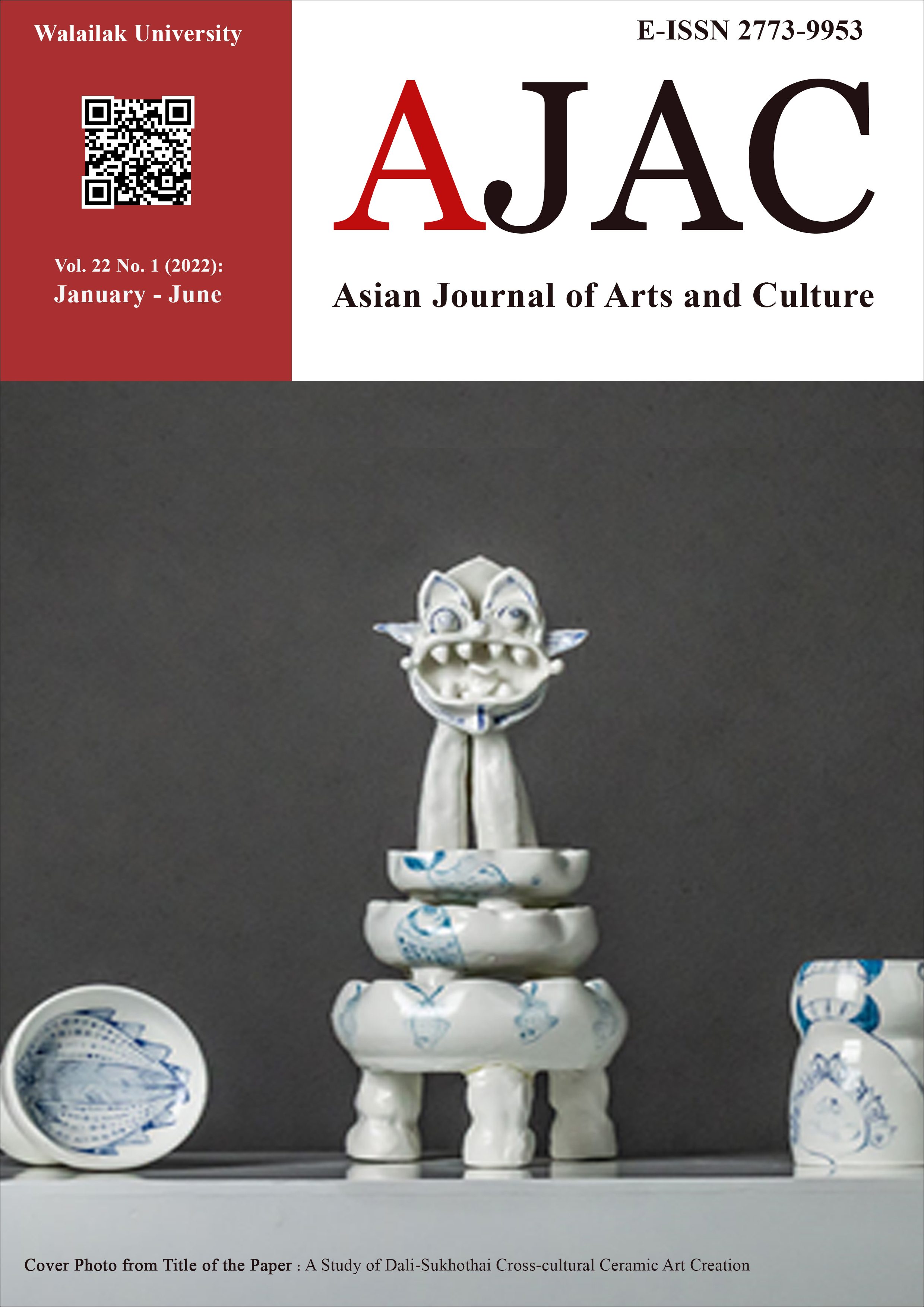A Study of Dali-Sukhothai Cross-cultural Ceramic Art Creation
Main Article Content
Abstract
This article is a part of the study entitled The Dali-Sukhothai Cross-Cultural Art Creation of "Thai Dragon Pattern". In the Dali-Sukhothai cross-cultural art creation study, ceramics were involved in both architectural decorative art and ceramic art, which implied the importance of ceramic art in the cross-cultural relationship between Dali and Sukhothai. This study focused on the cross-cultural relationship between Dali and Sukhothai ceramics and conducted a field study of the ceramic art at Dali Fengyi Jingtian Village and Sukhothai Sri Satchannalai No.61 kiln site. The study compared and analyzed the ceramics of both places at the perspective of: 1) firing technique, 2) production process and 3) decorative patterns, and extracted the artistic elements for art creation.
Article Details

This work is licensed under a Creative Commons Attribution-NonCommercial-NoDerivatives 4.0 International License.
© 2018 by Asian Journal of Arts and Culture, Walailak University. All rights reserved.
References
Lai, J. (2016). Research on the inheritance and development of earthenware art in Fengyi, Dali, Yunnan, China -- An Examination of Young Earthenware Artists in Jingtian Village, Fengyi, Dali, Yunnan, China as an Example. Art Education, 1(3), 230-230.
Nirat, S. (2017). Effects of Community Based Learning in Ceramic. Asian Social Science, 13(2), 41-48.
Ma,W. (2001). Yuxi Yao [Yuxi Kiln]. Shanghai, China: Wenhui Press.


